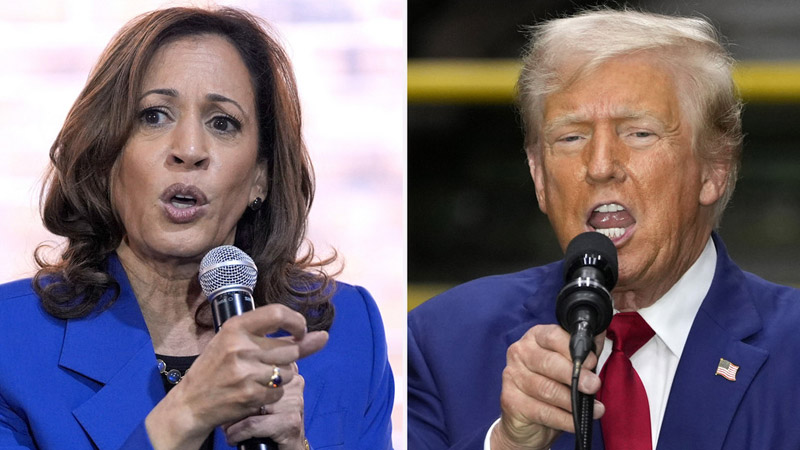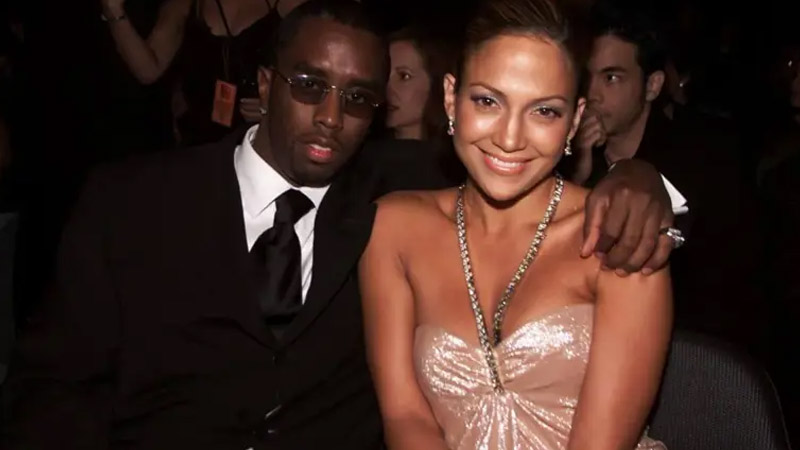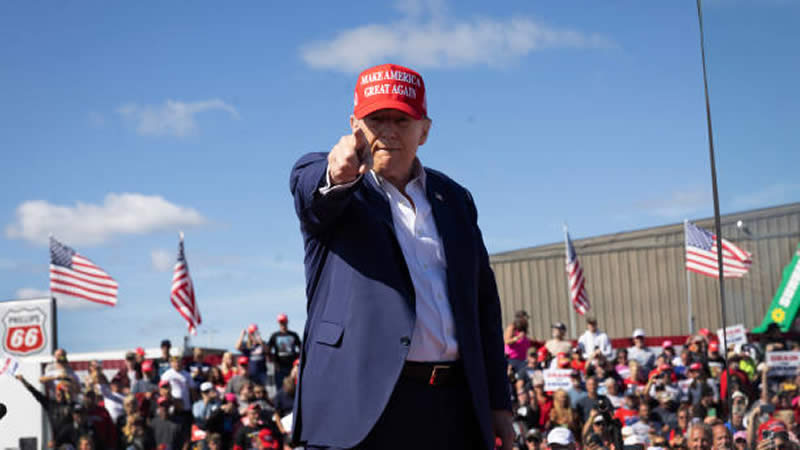“I Would Rather Be Her Than Him”: Dowd Sees Harris in Stronger Position Than Trump as Election Nears

Lead Art: Vice President Kamala Harris and former President Donald Trump are tied in the final New York Times national poll before Election Day. | AP
In the last stretch before the upcoming election, former George W. Bush campaign strategist Matthew Dowd shared his perspective on Vice President Kamala Harris’s position relative to former President Donald Trump. Speaking on MSNBC with Nicolle Wallace, Dowd conveyed optimism for Harris’s chances, suggesting that she’s in a better position than Trump despite polling challenges and voter fatigue.
Dowd, known for his expertise in data analysis, underscored a unique aspect of this election cycle: many Americans are not truly “undecided,” he explained. Rather, they are “unmotivated.” Harris’s challenge in the campaign’s final days, he suggested, is less about swaying opinions and more about inspiring the significant number of potential voters who feel disconnected or disinterested.
According to Dowd, a fundamental problem with current polling methods lies in their over-reliance on aggregated models and historical data. Referencing well-known polling outlets like Nate Silver’s FiveThirtyEight and Real Clear Politics, Dowd criticized their approach of combining multiple poll results without questioning the models on which they are based. “If the model is off, the model is off; none of those numbers matter,” he said to The New York Times.
Dowd explained that polls relying on outdated demographic assumptions may fail to capture recent shifts in voter behavior and sentiment, particularly if they draw on pre-2020 election cycles. These models might overlook factors like the percentage of college-educated voters, racial demographics, and gender, which play a significant role in modern voting trends.
“The big issue,” Dowd emphasized, “is if you model it based on an election that happened before 2016, 2020, or even 2022, you may miss the movements of people today.” Instead, he argued that the polling models should focus on current views and behavior, especially considering the substantial number of potential voters who could be motivated to cast their ballots. As Dowd observed, these models lean on outdated assumptions, missing out on the dynamics of 2024.
Reflecting on Harris’s recent rally in Harrisburg, Pennsylvania, Dowd made a powerful statement: “I would rather be her than him at this point in time. I would look at the data.” According to Dowd, the election data points increasingly show a favorable trend for Harris. He explained that, in a tight election, various pieces of data offer mixed signals.
“Some will be bad. Some will be neutral. Some will be good,” he noted, emphasizing that what matters is the majority of these data points. “Yesterday, a majority of the data points have been good for her. Some were bad, a few were neutral, but the majority were good. Today, the majority of data points are good for her.”
Dowd’s perspective sheds light on a key aspect of the electoral landscape: that voters’ behaviors are dynamic, not static, and they can be influenced by events in the final days leading up to the election. His remarks serve as a reminder that, while polls provide a snapshot, they cannot fully capture the motivations and sentiments driving voter turnout.
As the election approaches, Harris’s campaign will continue to focus on energizing unmotivated voters, an effort Dowd believes could tip the scales. For her campaign, the challenge is to bridge the gap between potential voters and the motivation needed to bring them to the polls.


